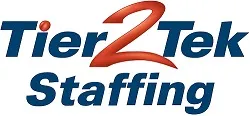Cutting time-to-fill without cutting corners is one of the biggest challenges in recruitment today. Organizations want to move fast in securing top talent, but a rushed process often leads to poor hires, high turnover, and wasted resources. The key is to design a hiring strategy that accelerates the process while maintaining quality and consistency.
Why Time-to-Fill
A long hiring cycle can cost a company more than just money. It can:
- Delay projects and slow down productivity
- Put additional stress on current team members
- Cause loss of top candidates to faster-moving competitors
- Negatively affect employer branding
Reducing time-to-fill means streamlining workflows, improving decision-making, and eliminating bottlenecks. The result is faster access to high-quality candidates and a stronger competitive edge.
Refine the Job Description and Requirements
Many delays start with vague or overly complex job descriptions. A refined job post attracts the right candidates faster and reduces wasted time reviewing unqualified applicants.
- Be precise: Focus on must-have skills, not a laundry list of “nice-to-haves.”
- Use clear language: Avoid jargon and confusing terminology.
- Highlight value: Show how the role contributes to organizational goals.
This upfront clarity prevents misalignment and cuts down on unnecessary rounds of screening.
Leverage Recruitment Technology Effectively

Modern hiring tools can dramatically speed up the process when used strategically.
Applicant Tracking Systems (ATS)
- Automate candidate screening
- Organize communication in one platform
- Reduce manual administrative tasks
AI-Powered Tools
- Resume parsing for faster review
- Chatbots for immediate candidate engagement
- Predictive analytics for better candidate matching
By relying on technology, recruiters spend more time building relationships and less time chasing paperwork.
Build and Nurture Talent Pipelines
Waiting until a position opens up to start sourcing candidates is a recipe for delays. Proactive talent pipeline management allows recruiters to stay ahead.
- Engage passive candidates: Keep communication open with potential hires even before roles open.
- Leverage referrals: Encourage employee referral programs to quickly tap into trusted networks.
- Maintain warm connections: Regularly update and check in with top talent already in your database.
Having a ready pool of candidates reduces time-to-fill dramatically without sacrificing quality.
Streamline the Interview Process
The interview stage is often where time-to-fill balloons unnecessarily. Clear structure and discipline are key.
Tactics to Streamline Interviews
- Standardize interview questions across roles
- Use structured interview scorecards for quick comparisons
- Limit unnecessary interview rounds
- Train hiring managers to focus on skills and culture fit
Efficient interviews ensure better, faster decisions and a positive candidate experience.
Empower Hiring Managers
Recruiters alone cannot shorten time-to-fill. Hiring managers need to be aligned and engaged in the process.
- Set clear expectations: Outline timelines, responsibilities, and communication standards.
- Provide training: Equip managers with interviewing best practices and evaluation tools.
- Hold accountability: Track responsiveness and decision-making speed.
When hiring managers understand their impact, decisions move forward more quickly without cutting corners.
Improve Candidate Communication

Lack of communication is a top reason candidates drop out. Fast, transparent updates enhance candidate experience and prevent losing talent mid-process.
- Acknowledge applications quickly
- Set realistic timelines and stick to them
- Offer feedback where possible
- Keep candidates engaged with regular updates
Consistent communication reduces uncertainty and keeps candidates invested in the role.
Use Data to Identify Bottlenecks
Without measuring hiring metrics, it’s impossible to know where delays occur. Regular analysis helps teams make informed improvements.
Key metrics to monitor include:
- Average time-to-fill by department or role
- Drop-off rates at different stages
- Time spent in each stage of the process
- Candidate satisfaction scores
Data-driven insights pinpoint where adjustments will yield the biggest impact.
Prioritize Quality Over Speed in Key Stages
While the goal is to move fast, there are moments where slowing down maintains quality. For example:
- Take time to align with stakeholders before opening a role
- Ensure assessment tools accurately reflect job performance
- Balance speed with compliance and fairness in evaluations
Cutting time-to-fill without cutting corners requires balance, discipline, and smart strategy. By refining job postings, leveraging technology, building pipelines, streamlining interviews, and maintaining strong communication, organizations can hire top talent quickly without sacrificing quality. The result is faster growth, stronger teams, and an employer brand that attracts the right candidates every time.
Content reviewed and published by Tier2Tek Staffing Editorial Team .

